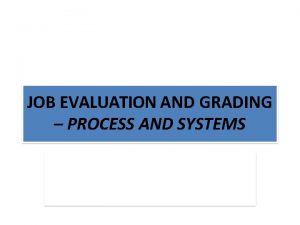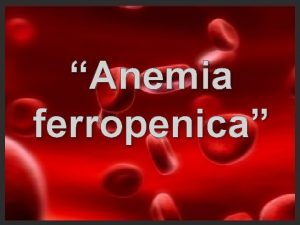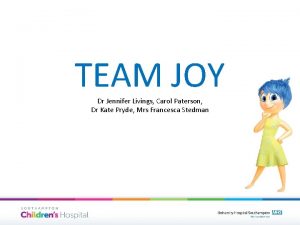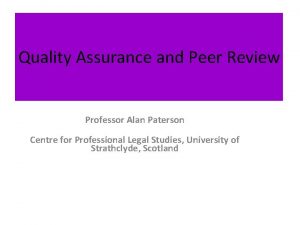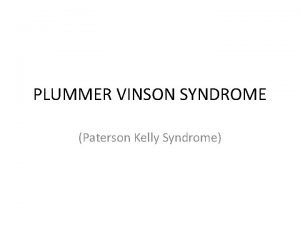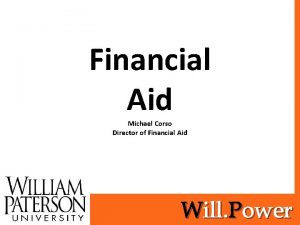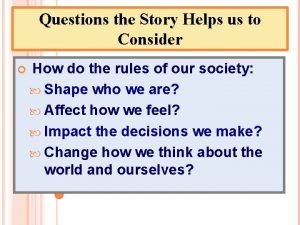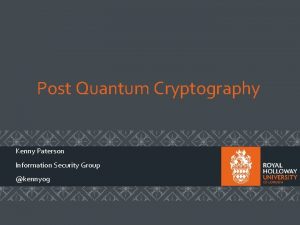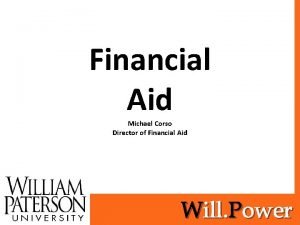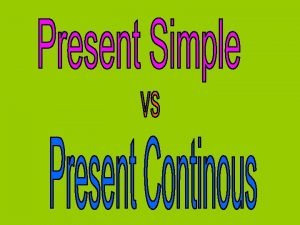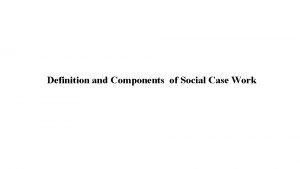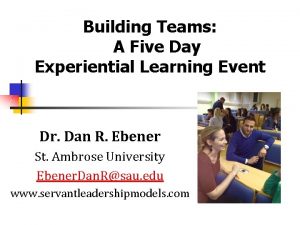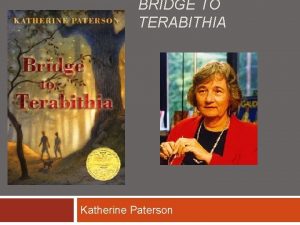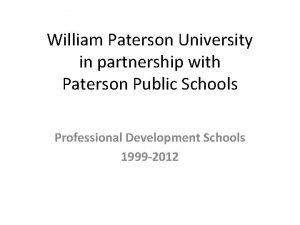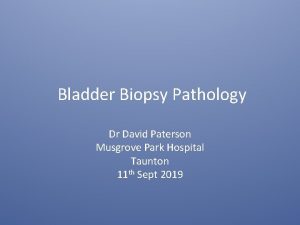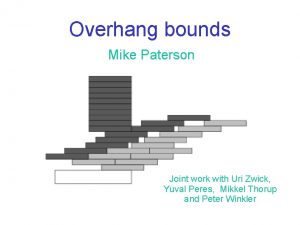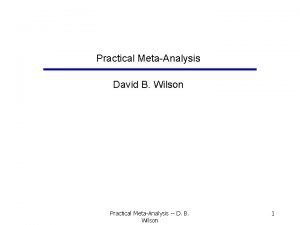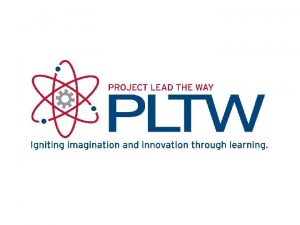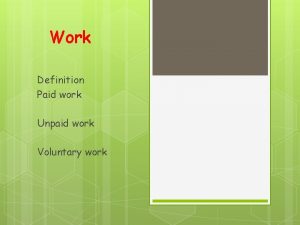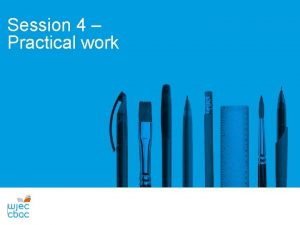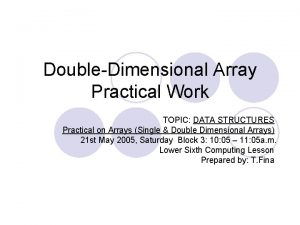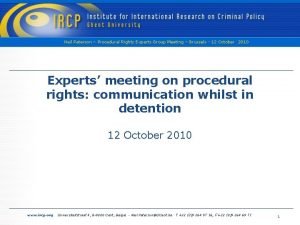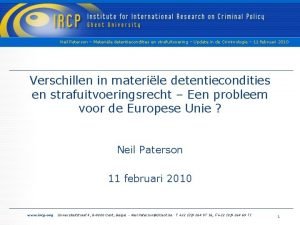Integratedinstructions in practical work DAVID PATERSON ALDENHAM SCHOOL




![Reducing extraneous load Middle school science (2015), Rainbow test tube activities. [online] Last accessed Reducing extraneous load Middle school science (2015), Rainbow test tube activities. [online] Last accessed](https://slidetodoc.com/presentation_image/b79f454ea70b735017b69d8239c2595b/image-5.jpg)

















- Slides: 22

Integrated-instructions in practical work DAVID PATERSON ALDENHAM SCHOOL, ELSTREE

Acknowledgements RSC Chemical Education Research Group Teacher-Researcher Fellowship Scheme 2018 Suzanne Fergus & Michael Seery. Staff and students at Aldenham School Bob Pritchard, hi-impact consultancy

Cognitive Load Theory (CLT) What are they thinking about in the Working Memory? Intrinsic Extraneous Germane • complexity of concepts • inter-relatedness of ideas • complexity of the instructional materials • external influences • building the mental models (schema) about the concepts

Cognitive Load Theory (CLT) Total Cognitive Load Fixed Intrinsic Load Manage with good instructional sequencing Greer, D. L. , et al, Cognitive theory of multimedia learning…, Journal of Education, 2013, 193(2), 41 -50 https: //www. researchgate. net/publication/269112838 Extraneous Load Germane Load Reduce with good instructional design Maximise this!
![Reducing extraneous load Middle school science 2015 Rainbow test tube activities online Last accessed Reducing extraneous load Middle school science (2015), Rainbow test tube activities. [online] Last accessed](https://slidetodoc.com/presentation_image/b79f454ea70b735017b69d8239c2595b/image-5.jpg)
Reducing extraneous load Middle school science (2015), Rainbow test tube activities. [online] Last accessed 5 th July 2017: https: //middleschoolscience. com/2015/12/06/rainbow-test-tubes-activity/ OCR (2017), March of the precipit. ANTs. [online] Last accessed 5 th July 2017: http: //www. ocr. org. uk/Images/323619 -pag-activity-chemistryidentification-of-species-suggestion-2. docx

Extraneous load - electrolysis Collecting enough gas Spillages in setting up the test tubes Connecting powerpack and getting it working Getting the test tubes filled Getting the boss and clamp right

MICROSCALE Cu. Cl 2 ELECTROLYSIS http: //www. ocr. org. uk/Images/311750 -pag-activity-chemistry-electrolysis-suggestion-2. docx 7

Instructional design - progression

Split-attention effect Rebecca Torrance Jenkins, Using educational neuroscience and psychology to teach science Part 1. SSR December 2017

Split attention – a demonstration One person writes; the other times 1. Write out all the numbers from 1 to 26 in order, left to right. 2. Write out all the letters from A to Z in order, left to right. Make a note of how long that took.

Split attention – a demonstration Same person writes; same person times; without looking at the previous piece of paper 1. Write out A 1, B 2, C 3 through to Z 26, in order, left to right. Make a note of how long that took. Compare with your previous time.

Split attention in practical work a Add 20 cm 3 of the 0. 5 M sulfuric acid to the 100 cm 3 beaker. Heat carefully on the tripod with a gentle blue flame until nearly boiling. b When the acid is hot enough (just before it starts to boil), use a spatula to add small portions of copper(II) oxide to the beaker. Stir the mixture gently for up to half a minute after each addition. c When all the copper(II) oxide has been added, continue to heat gently for 1 to 2 minutes to ensure reaction is complete. Then turn out the Bunsen burner. It may be wise to check (using p. H or litmus paper) that no acid remains. If the acid has not been hot enough, excess acid can co-exist with copper oxide. d Allow the beaker to cool slightly while you set up Stage 2 e Place the filter funnel in the neck of the conical flask. f Fold the filter paper to fit the filter funnel, and put it in the funnel. g Make sure the beaker is cool enough to hold at the top. The contents should still be hot. h Gently swirl the contents to mix, and then pour into the filter paper in the funnel. Allow to filter through. i A clear blue solution should collect in the flask. If the solution is not clear, and black powder remains in it, you will need to repeat the filtration. Stage 3 (optional) j Rinse the beaker, and pour the clear blue solution back into it. Label the beaker with your name(s). Leave the beaker in a warm place, where it won't be disturbed, for a week or so. This will enable most of the water to evaporate. would fill with toxic fumes. k Before all the water has evaporated, you should find some crystals forming on the bottom of the beaker. Filter the solution. Collect the crystals from the filter paper onto a paper towel. http: //www. rsc. org/learn-chemistry/resource/res 00001917/reacting-copper-ii-oxide-with-sulfuric-acid? cmpid=CMP 00006703

Integrated Instructions – Deschri et al (1997), J Res Sci Teach, 34(9), 891 -904: Effect of a Laboratory Manual Design Incorporating Visual Information-Processing Aids on Student Learning and Attitudes

Integrated Instructions 1. Add 2 cm 3 of 0. 2 M sodium chloride solution to a test tube. 2. Add 5 drops of 0. 5 M nitric acid to the same test tube. 3. Add 5 drops of 0. 1 M silver nitrate solution to the same test tube. 4. Make and record your observations.

Integrated-instructions in practical work

Student practical work

Data collection

Some data o Year 9 teaching group (18 students) o Completed in 22 ± 5 minutes o 23 student questions (12 required additional guidance) “[The instructions] were clear, direct and the annotations helped to show what exactly we should do. ” “The pictures helped my confidence. I could visualise what I was doing. ”

Another of the practicals Questions: q Describe the sequence of observations – what happened first, second etc. q What observations did you make that solutions were formed? q What observations did you make that showed a neutralisation has occurred?

Some more data General themes: - all students completed the activities and none found them hard; - most students found the clarity of the instructions helpful in understanding what they were doing; - some students found the ability to visualise what they were doing helped with their confidence; - there was a mixed picture on how well students understood what they had done / observed.

Other integrated instructions Biology – food tests (R. Kirsten, Aldenham School) Chemistry – electrolysis (H. Lord, Haslingden High School) Physics – density (B. Cook)

Today o Have a look at a couple of traditional vs integrated instructions. o Annotate your copies – good points / constructive criticism. o Any questions… o Submitted paper in JCE – awaiting reviewers comments.
 The last dog story
The last dog story Paterson grading system
Paterson grading system Tim paterson
Tim paterson Sindrome de paterson kelly
Sindrome de paterson kelly Dr jennifer paterson
Dr jennifer paterson Alan paterson lawyer
Alan paterson lawyer Plummer vinson syndrome triad
Plummer vinson syndrome triad Paronychia
Paronychia Michael corso
Michael corso Paterson project management
Paterson project management The last dog by katherine paterson
The last dog by katherine paterson Kenny paterson
Kenny paterson William paterson fafsa deadline
William paterson fafsa deadline Jenny needs to ask me. i will buy it for her
Jenny needs to ask me. i will buy it for her Work immersion expected behavior
Work immersion expected behavior Shs work immersion portfolio sample
Shs work immersion portfolio sample Working hard vs working smart
Working hard vs working smart Present continuous of work
Present continuous of work Social goal model in group work
Social goal model in group work Definition of case work in social work
Definition of case work in social work Team vs working group
Team vs working group Physics 03-01 work and the work-energy theorem
Physics 03-01 work and the work-energy theorem Chapter 4 work and energy section 1 work and machines
Chapter 4 work and energy section 1 work and machines

